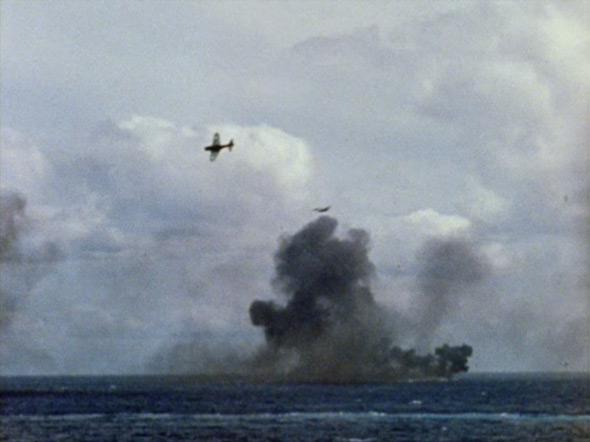Lone Survivor, based on the real-life account of a fatal Navy SEAL mission during the war in Afghanistan, was a passion project for director Peter Berg. Not only did he negotiate a distribution deal with Universal under the agreement that he would first helm the big-budget flop Battleship, but he also spent several months embedded with an active SEAL team for research—a first for a Hollywood civilian.
While in western Iraq with the team Berg wasn’t allowed to shoot any footage, but he did have “a proximity to a lot of violence,” he said. “I never felt like I was in danger, with 20 Navy SEALs. After I looked at where I’d been, I realized I’d been in more danger than I thought. They were extremely competent guys and created an environment that felt secure.”
As military bloggers Michael and Eric Cummings explained in Slate, the film’s historical accuracy in the depiction of the Operation Red Wings mission is shaky, taking creative liberties with the details of what took place. But Berg’s unprecedented access to the military paid off in one respect, at least: Lone Survivor’s careful attention to the overall “realities of war” have given it a notable quality of “verisimilitude”; the action sequences have been described as “bloody, intense, and precise.”
Like Berg, the five Hollywood directors Mark Harris examines in his immersive new book, Five Came Back: A Story of Hollywood and the Second World War, worked closely with the U.S. military and used their experiences to inform their filmmaking. Unlike Berg, however, all of them enlisted in the armed forces with the intent of producing films that would help sell the war to the American public. Four of them—John Ford, William Wyler, George Stevens, and John Huston—saw a significant amount of action, on the scene for some of the most important battles and events of WWII. And as all of them learned, and Five Came Back makes clear, being in the thick of war and depicting it as it’s experienced are two very different, difficult things to do—especially when the government gets involved.
Harris carefully illustrates each director’s reason for joining the cause. For Frank Capra, who served his time in Washington, D.C., overseeing the production of propaganda films, his Sicilian immigrant background made him eager to prove his patriotism. Wyler was an émigré Jew who saw the making of Mrs. Miniver as “a small contribution to the war effort.” Stevens, who shot critical footage inside the Dachau concentration camp (used as evidence during the Nuremberg trials), was spurred to action after viewing Leni Riefenstahl’s inflammatory Nazi propaganda film, Triumph of the Will. It was then that he had the epiphany, Harris writes, that “’all film,’ including his own, ‘is propaganda.’”
It’s these motivations, along with those of fellow filmmakers Ford and Huston, that lead the charge of Harris’ narrative of Hollywood’s complicated collaborative effort with the government during the war. This is vast and complicated subject matter, which has been written about in the past through the broader lens of the Hollywood studio system or the industry’s post-war output, particularly film noir. But by framing his study around five legendary directors, Harris provides a unique entry point into the two institutions’ tempestuous relationship. Culled together and interlaced are stories of the directors’ active participation in some of the war’s most important battles, including the Battle of Midway (Ford) and the Normandy landings (Ford and Stevens). As the accounts of the directors’ military experiences unfold and, at times, overlap with one another, Harris effectively places them in historical context via personal accounts, government documents, and newspaper clips.
It’s a structural device similarly employed by the author in his impressive debut Pictures at a Revolution, which looked at the five Best Picture nominees from 1967. In that book, Harris pinpointed a turning point in both cinematic and American tastes and compellingly told each film’s long, troubled journey to Oscar night from social, political, and economic angles. Five Came Back harbors subject matter of an even grander variety, but the execution is no less detailed and fascinating to read. Through each of the five men’s experiences, Harris unravels the difficulties of mixing Hollywood with politics.
Most of the directors were already familiar with the pressures and confines of studio moguls; in 1938, Stevens was determined to make the anti-interventionist film Paths of Glory, but he was firmly denied by RKO and “swiftly steered” to make the gung-ho Gunga Din. (Paths of Glory was later directed by Stanley Kubrick.) Now they faced constant interference from the government in their quest to document and present the war; scenes and lines of film were ordered to be cut and censored, and some films, like Huston’s documentary on shell-shocked soldiers, Let There Be Light, wouldn’t be screened publicly for decades.
Capra, the most creatively independent of the directors prior to America’s WWII entry, frequently clashed with Lowell Mellett, appointed by President Roosevelt as the head of the Office of Government Reports. Harris’ depiction of Mellett sets him up as an adversary fueled both by censorship (he frequently railed against films incorporating too many jingoistic elements) and competition. Mellett’s fight over Capra’s stereotypical depictions of the Axis Powers in the highly influential and propagandistic seven-part series Why We Fight is played out carefully and closely: the mediocre reception of Mellett’s own theatrically released war documentary, The World at War, followed by General George Marshall’s suggestion that Prelude to War, the first in Capra’s series, needed to be seen by “every civilian”; Mellet’s angry note to Roosevelt that Capra’s film, originally intended only for soldiers, is “a bad picture in some respects, possibly even a dangerous picture.”
And Harris balances multiple storylines with ease: He offers deep analysis of the films created during this time, canny evaluation of the careers of the filmmakers themselves, and historical context of the public’s constantly shifting feelings about the war. This is unsurprising: As a longtime writer for Entertainment Weekly, Grantland, and other publications, he’s demonstrated a sharp ability to analyze films and the mechanics of Hollywood, past and present. His Vulture piece on the making of Zero Dark Thirty, for which he interviewed director Kathryn Bigelow and screenwriter Mark Boal, is layered with details on the government’s involvement with the filmmaking process (as when a CIA memo urged creating “stronger relationships with CAA”); it’s one of the most in-depth profiles to emerge on that film’s backstory.

Courtesy of the Penguin Press
It’s also a hint at what hasn’t changed significantly since WWII; as Harris explains in his book, America’s involvement in that war led to a then-radical collaboration between the government and Hollywood, a “first attempt at a sustained program of filmed propaganda.” It’d be a stretch to suggest Lone Survivor or especially Zero Dark Thirty exhibit anything close to the pro-military sentiment that emerged during the ’40s, but those filmmakers’ experiences do suggest that films that don’t blatantly go against the military line can still gain intimate access to the government. (A few months after Harris’ profile, a newly declassified CIA memo suggested that the government had greater say in Zero Dark Thirty’s creative side than initially thought.)
Five Came Back’s greatest achievement is its revealing portraits of each director, which ultimately serve to demystify their legends to reveal creative men struggling with their desires to simultaneously serve the country and preserve their own filmmaking voices. By the time the war came to an end, each director had been distinctly changed by the war both personally and creatively. “For the first time in his career,” Harris writes, “Wyler became obsessed with realism” while working on what would become his “most personal film,” The Best Years of Our Lives. Stevens, haunted by what he had seen and filmed at Dachau, struggled to find inspiration, never directing another comedy; he once remarked, “After the war I don’t think I was ever too hilarious again.” And Hollywood itself would become more serious and concerned with verisimilitude, as Harris notes, through unprecedented social realism dramas (The Lost Weekend, Gentleman’s Agreement). Other wars have followed, and the studios and the Pentagon have at times held each other at arm’s length and at others embraced. Five Came Back is a fascinating document of their first flirtation and suggests how complicated their relationship will continue to be.
—
Five Came Back: A Story of Hollywood and the Second World War by Mark Harris. The Penguin Press.
See all the pieces in this month’s Slate Book Review.
Sign up for the Slate Book Review monthly newsletter.
